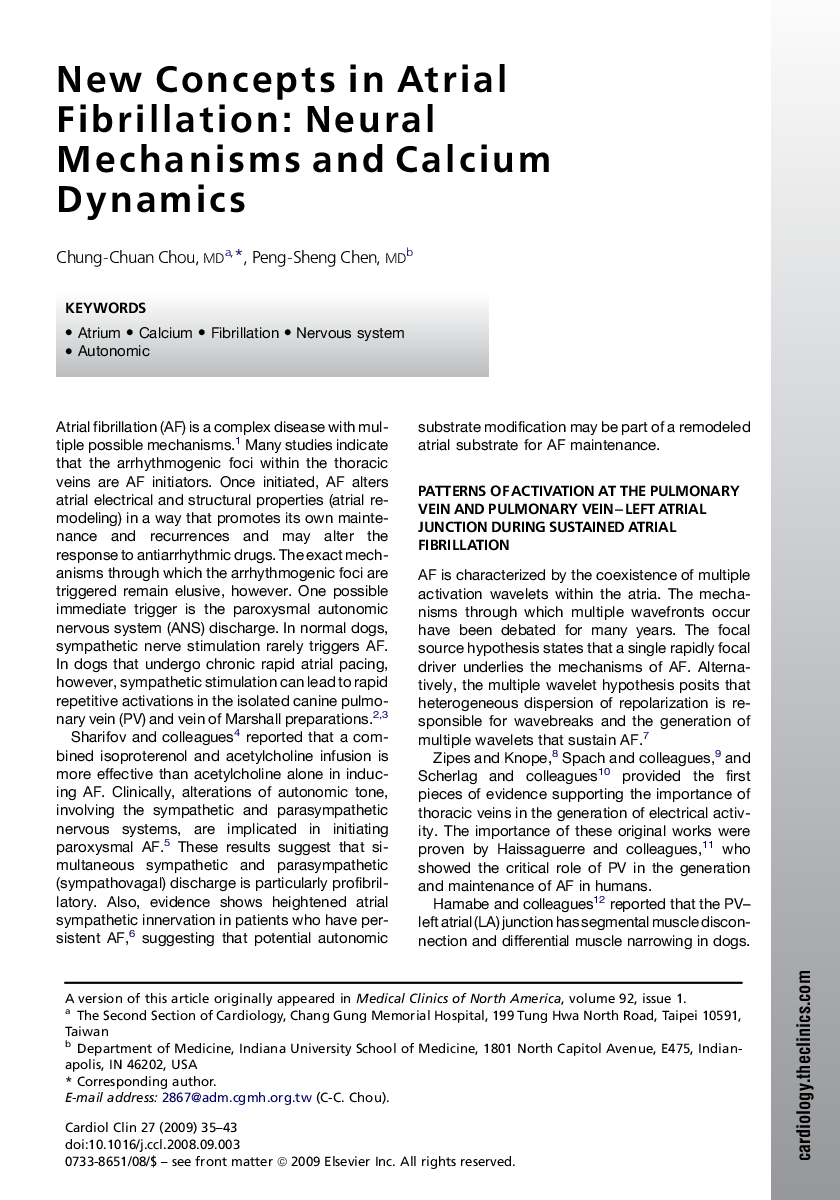| Article ID | Journal | Published Year | Pages | File Type |
|---|---|---|---|---|
| 2898498 | Cardiology Clinics | 2009 | 9 Pages |
Abstract
Atrial fibrillation (AF) is a complex arrhythmia with multiple possible mechanisms. It requires a trigger for initiation and a favorable substrate for maintenance. Pulmonary vein myocardial sleeves have the potential to generate spontaneous activity, and this arrhythmogenic activity is surfaced by modulation of intracellular calcium dynamics. Direct autonomic nerve recordings in canine models show that simultaneous sympathovagal discharges are the most common triggers of paroxysmal atrial tachycardia and paroxysmal AF. Autonomic modulation as a potential therapeutic strategy has been targeted clinically and experimentally, but its effectiveness as an adjunctive therapeutic modality to catheter ablation of AF has been inconsistent. Further studies are warranted before application can be widely implied for therapies of clinical AF.
Related Topics
Health Sciences
Medicine and Dentistry
Cardiology and Cardiovascular Medicine
Authors
Chung-Chuan MD, Peng-Sheng MD,
